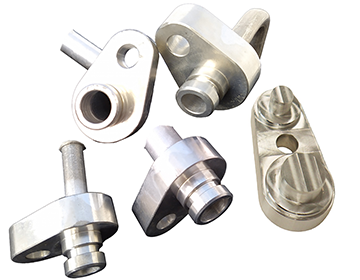CNC (Computer Numerical Control) machining is a versatile manufacturing process that utilizes computer-controlled machinery to shape and finish raw materials into precise components. It is widely used across industries such as aerospace, automotive, medical, and electronics for producing complex parts with high accuracy and consistency. CNC machining is a sophisticated manufacturing process that combines advanced technology, precise programming, and skilled operators to produce high-quality components with tight tolerances and complex geometries. From design to final inspection, each step is crucial in ensuring the efficiency and accuracy of the machining process.
The process begins with selecting the appropriate raw material based on the requirements of the final component. Common materials include metals (such as aluminum, steel, titanium), plastics, and composites.
Computer-Aided Design (CAD) software is used to create a digital 3D model of the desired component. The CAD model contains detailed information about dimensions, features, and tolerances.

Computer-Aided Manufacturing (CAM) software translates the CAD model into instructions (G-code) that the CNC machine can understand. This programming defines the tool paths, cutting parameters, and machining operations needed to produce the component.
The CNC machine is set up with the appropriate cutting tools, workholding fixtures, and raw material. The cutting tools, such as end mills, drills, and inserts, are selected based on the material being machined and the desired surface finish.
Milling: Cutting away material using rotating cutting tools to create features like slots, holes, and complex geometries.
Turning: Rotating the workpiece while a cutting tool removes material to create cylindrical shapes or profiles.
Drilling: Creating holes of various sizes and depths using drill bits or specialized drilling tools.
Grinding: Precision surface finishing using abrasives to achieve tight tolerances and smooth surfaces.
EDM (Electrical Discharge Machining): Using electrical sparks to erode material in intricate shapes or hardened materials.
Quality control measures are often integrated into the machining process, with probes or sensors checking dimensions and tolerances during machining. Any deviations from the specified parameters can be corrected in real-time, ensuring the final components meet the required standards.
After machining, additional processes such as deburring, surface finishing, or heat treatment may be applied to improve the final part's functionality or appearance.
The finished components undergo thorough inspection using precise measurement tools, such as coordinate measuring machines (CMMs), to verify dimensional accuracy and quality.
Once the components pass inspection, they are packaged according to the customer's requirements and shipped to their destination for assembly or further use.
Ready to Get Started?
✓ Free quotes within 1 business day
✓ 70+ years of manufacturing experience
✓ Serving Michigan and surrounding states
✓ Prototype to high-volume production
Get A Quote